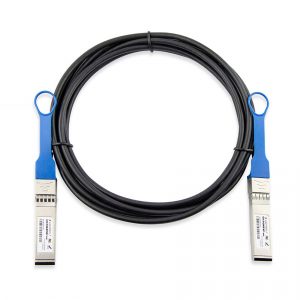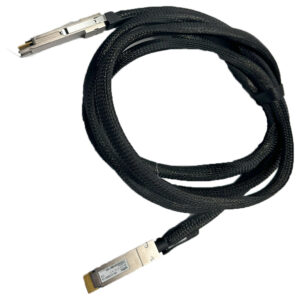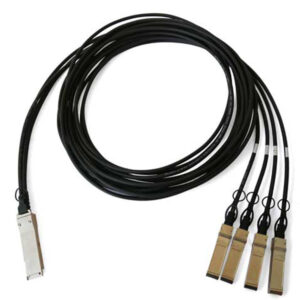When choosing a Direct Attach Copper Cable (DAC) there are a few variables you should consider regardless of your application. Active or passive, connector type, AWG, and length are all key components in choosing the right DAC cable. DACs are a form of optical transceiver cables used to connect switches to routers and servers. Unlike Active Optical Cables (AOC), a DAC relies on copper wires to transmit data which results in a lower cost.
Active Vs. Passive DAC

When purchasing a DAC one of the first decisions to be made is whether you require a passive or active cable. A passive direct attach copper cable is essentially a transparent cable to the switch and requires little to no direct power to function. A passive cable simply transmits the signals without any modification, processing, amplification, or equalization. Given that there is no modification or amplification to the signals being transmitted, passive cables are usually limited to short distances of less than 7 meters.
Active direct attach copper cables are constructed very similarly to passive cables but contain a microprocessor and other electrical components in the connectors that boost and extends signals. Thus, the data transmitted is able to travel a greater distance. Active DACs can usually cover a distance of approximately 15 meters which is double that of its passive counterparts. Generally, active DACs consume a little more power than passive DACs and costs are slightly higher as well. It is important to check the compatibility matrix of your switch when deciding upon a passive or active DAC as some switches may not support passive cables.
DAC Connector Type
Direct attach cables are available in several types of connections and standards. Most cables have one connector at each end. However, there are DACs which can have 2 or 4 connectors on one end known as a “breakout cable”. For example, a QSFP+ to 4 SFP+ passive DAC breakout features a single QSFP+ connector rated for 40Gbps on one end and 4 SFP+ connectors each rated for 10Gbps on the other end. DACs featuring SFP+ connectors are common in 10Gbps networks. Therefore, choosing the right connector for your network requirement is absolutely vital. In general, you can use SFP+ for 10G, QSFP+ for 40G, SFP28 for 25G, QSFP28 for 100G and QSFP-DD for 400G.
American Wire Gauge (AWG)
Since direct attach copper cables are constructed with shielded twin-axial copper wires, there are varying gauges of wires ranging from 24 to 30AWG depending on the requirement of your cable. The most common gauges currently in the market are 24AWG, 28AWG, and 30AWG. As a general rule of thumb is it important to note that the longer the distance you seek to cover the high the AWG rating should be.
DAC Length
The length of your cable can in most cases determine whether or not you require a passive or active direct attached copper cables. Distances under 5 meters can be supported by passive cables. Any distance exceeding 5 meters but under 15 meters can be supported by active cables. It is important to select the right length of cable as this can be a key variable in overall performance.
Passive and Active DACs offer compelling cost advantages over AOCs (active optical cables) in short distance applications. Our wide range of DACs cover data rates from 10G all the way to 400G.
Related Products



